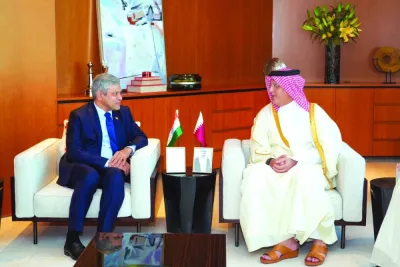Law enforcement agencies in northern India have rescued at least 160 Nepalis trafficked across the border since two powerful earthquakes struck last year, a senior Indian official said.
The twin quakes in April and May killed nearly 9,000 people and injured tens of thousands in the impoverished Himalayan nation. Around two million were left homeless.
Following aid agency warnings that human traffickers could prey on vulnerable survivors in the aftermath of disasters, authorities in India’s Uttar Pradesh state passed an order directing areas bordering Nepal to be vigilant.
“The day the earthquake happened, I went to my office and issued a sensitisation letter to all the district magistrates and superintendents of police in all the seven districts which border Nepal,” Kamal Saksena, home secretary for Uttar Pradesh state, said.
“Then we conducted video conferences with all of them and asked people from all the relevant ministries such as women and child and labour and other departments to all attend so that there was communication
and co-ordination.”
Trafficking was rife in Nepal even before the earthquakes, with an estimated 12,000 Nepalese children trafficked to India every year, according to a 2001 International Labour Organisation study.
Activists said risks were much higher after the quakes when traffickers or “brokers” duped devastated families who had lost their homes and breadwinners to hand over their children with the promise of a monthly salary and a good job in India.
Yet the reality is very different. Girls and women not recruited into prostitution are sold as domestic slaves in India and other countries. Boys are taken into forced labour.
Saksena said authorities provided training for more than 4,000 people, including police inspector generals, district magistrates, railway police, border forces, child protection officers and shelter home staff.
This included examining suspected trafficking routes and destination points such as train stations, border check posts and interstate bus stations.
They also focused on how to identify suspected traffickers and the proper procedures after rescues and arrests.
“We tell them what to be alert for. People travelling with large numbers of children for example,” Saksena said in an interview on Saturday on the sidelines of an anti-human trafficking conference in the eastern town of Siliguri.
“One sub-inspector intercepted a couple in their mid-forties who had 15 children. The children lied saying their parents were taking them to Mumbai for sight-seeing. We found out the children were sold to the traffickers
for 1,500 rupees ($22) each.”
Saksena said between 50 to 60 arrests have been made so far and the cases are currently being investigated. Most of those rescued since April have been repatriated, he added.
“Prior to earthquake, we weren’t really doing that much training,” he said, adding that had now changed. “To co-ordinate with all the stakeholders with the same sensitivity and synergy is quite an effort.”
Technology aims to speedily repatriate: Charities in South Asia are piloting new software which aims to speed up the repatriation of rescued victims of human trafficking who have been smuggled from countries such as Nepal and Bangladesh and forced into slavery in India.
South Asia, with India at its centre, is the fastest-growing and second-largest region for human trafficking in the world, after East Asia, according to the United Nations Office for Drugs and Crime (UNODC).
Charities focusing on the rehabilitation of victims say repatriation is often one of their biggest challenges and can,
in some cases, take years.
There is a lack of effective international co-ordination between states to verify victims’ identities and trace their places of origin - often remote, impoverished, interior regions with poor telecommunications and infrastructure, they add.
Developed by aid agency Plan India and Bangladeshi social enterprise Dnet, the Missing Child Alert (MCA) is a database programme - with the victim’s data, including their name, photo and place of origin - which can shared between South Asian nations.
“We’ve had cases that have taken up to three years for the person to be repatriated back to their home countries and they are stuck in shelter homes for all that time,” Mohammed Asif, Plan India’s director of programme
implementation, said.
“After testing this technology, we have found repatriation can be done much faster as the sharing of information and tracing of a person’s home will be immediate and agencies can quickly try to reunite them with their families.”
There are no accurate figures on the number of people being trafficked within South Asia, but activists say thousands of mostly women and children are trafficked to India annually from its poorer neighbours Nepal and Bangladesh.
Most are sold into forced marriage or bonded labour working in middle class homes as domestic servants, in small shops and hotels or confined to brothels where they are repeatedly raped.
The MCA, which is being piloted by ten charities in India, Bangladesh and Nepal, would allow the details of a rescued victim to be entered into the system and agencies in the country of origin immediately alerted.
The one-year pilot began in January and will be assessed at the end of 2016, Asif said on the sidelines of an anti-human trafficking conference in the east Indian town of Siliguri.
“If we are successful in demonstrating this is a much more efficient system which will achieve safer and faster repatriation, we may be able to get the three governments to adopt this, and eventually the whole region,” he said.



